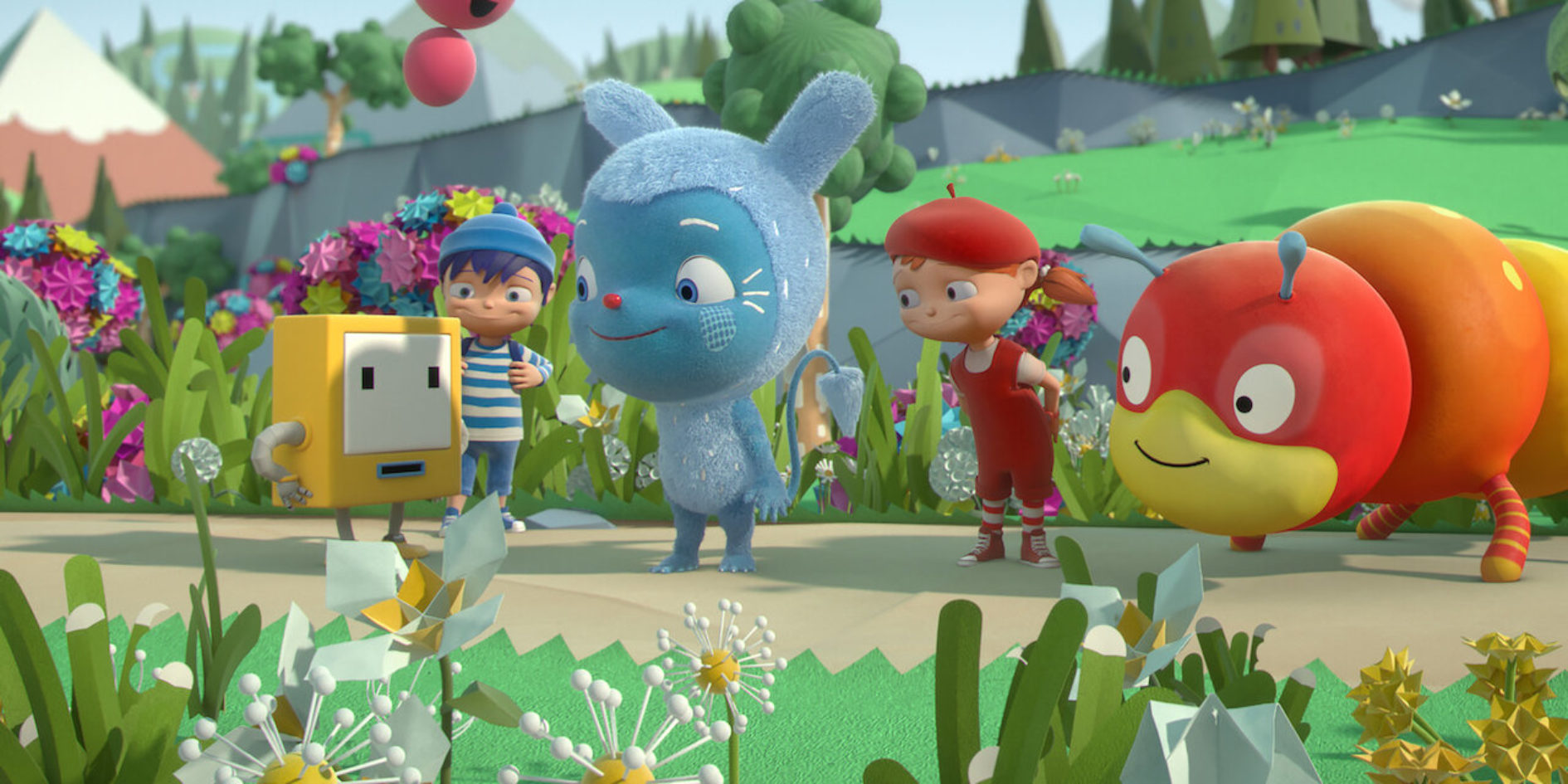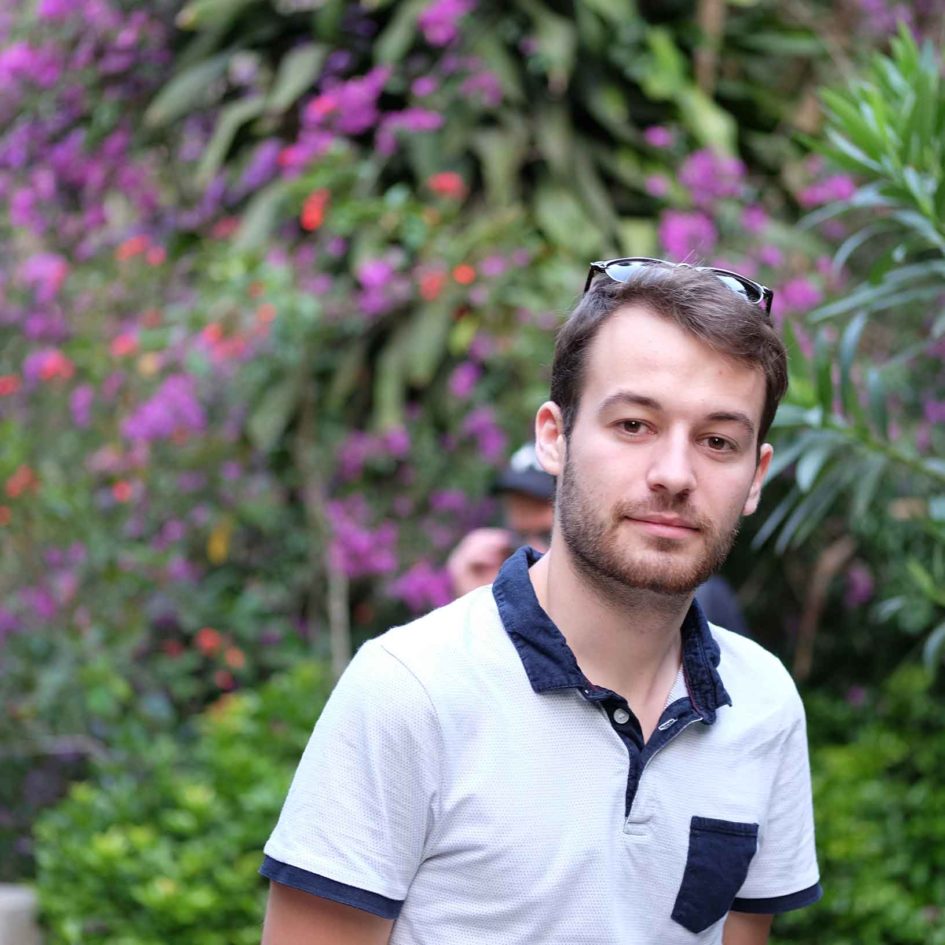
Clément Poulain
A time of exchange with Clément Poulain, a 2016 graduate of the CG Animation and Master Degree in Nantes. He was able to make his professional dream come true by managing the studio pipeline. Discover his portrait.
A look back at your ESMA years
WHAT LED YOU TO ENROL AT ESMA?
I started to be interested in 3D in high school, with two friends we had the good idea to create a video game of MMO type during our years of first and last year. This project never came to fruition, of course, because it was too big, but I continued to have fun on smaller projects afterwards.
A few years later, when I went to the open days of animation schools, many of them disappointed me. I had noticed, in talking to the 1st and 2nd year students, that they were doing exercises that I was already doing at home.
But when I discovered ESMA’s Open Day, it was completely different! I immediately noticed that the students’ work was on a completely different level. That’s why I only applied to this school.
Moreover, I wanted to make my passion my profession. I wanted to push my technical and artistic skills to a very high level.
WHAT DID THE TRAINING BRING YOU?
This training allowed me to reach my goal, which was to enrich my 3D skills, but also much more. I discovered aspects of the industry that I didn’t know about, new job possibilities that I had never heard of.
WHAT STOOD OUT FOR YOU DURING YOUR YEARS AT THE SCHOOL?
The campus life was exceptional but the last year was the most important for me, of course! One year, one task. To make a short film in teams of 5.
This not only made us use everything we had learned during our studies, but also prepared us for the world and the atmosphere of work.
It made us grow, quite simply.
YOU WORKED ON AD VITAM AETERNAM, CAN YOU TELL US WHAT ROLE YOU HAD AND HOW IT WENT?
The summer before the short film I worked on an auto-rig, which saved us a lot of time in production. Then I worked on the walking cycles, in animation, because a big part of the film was a walk in the forest. And finally, I animated a good part of the film’s shots.
In parallel to that, I was also the technician of the group, helping out the friends or writing scripts in MEL or Python to facilitate repetitive tasks.
We had a very good team, but we had to cut 2-3 shots, reduce our desires in the rendering and of course finish at the last minute. It was an exceptional adventure for us and we were all happy and proud to present our film in the cinema.
DID YOU ALREADY KNOW WHAT YOU WANTED TO DO WHEN YOU LEFT SCHOOL? IF SO, DID YOU TRY TO SPECIALISE IN THIS FIELD(S) DURING YOUR YEARS AT SCHOOL?
Yes, I knew in which direction I wanted to go quite early. As soon as I started rig classes and playing with script editor, I knew right away that it was for me. So I started doing extra exercises in my spare time, researching how to optimise scenes for example. And a few months later, my classmates trusted me to come and ask me questions when our teacher was busy with another student.
But by the end of my studies, I was still torn between rigging and pipeline. I was lucky enough to find an opportunity that allowed me to be hired as a rigger and pipeline.
Your career path
HOW DID YOUR ENTRY INTO THE PROFESSIONAL WORLD GO?
My entry into the professional world went very well! I felt at my place, prepared, and my colleagues trusted me very quickly, which allowed me to integrate even more quickly. As I said above, I was also very lucky in my first job. I was able to choose between rigging and pipeline, the activity I wanted to pursue. For the first two months, I did a bit of rigging and pipeline, which finally allowed me to make a choice between these two disciplines. Indeed, I knew very quickly that it was the pipeline that I had to deepen.
YOU ARE NOW WORKING IN LONDON, HOW WAS YOUR ARRIVAL IN A FOREIGN COUNTRY?
The first few weeks were very busy and tiring. I had to work, get used to the language, the different accents, find a place to live, open a new bank account and so on!
But what impressed me the most was the level of concentration required to do my job but also to listen to my colleagues in a new language.
Apart from that, it was great! Meeting new people from all over the world, exploring a new city with many different cultures. And all of this is quite feasible with average English!
WHAT POSITIONS HAVE YOU HELD SINCE GRADUATING?
I started as a Junior Pipeline in Squint/Opera for season 2 of Messy goes to Okido. We were only 2 Pipeline TDs for a team that grew to 60-70 artists, which got me into the swing of things very quickly. Once the animation series was finished, I worked for a few months for their architecture and special effects departments.
Then I was recruited by Dupe Vfx, a brand new company that was starting up, to be the only Pipeline TD on the team. Mainly on 2D projects like Sex Education, I created a pipeline for Nuke and Data I/O to support both the artists and the production team.
Finally, this summer, Jellyfish Pictures recruited me as a Pipeline TD. Then, very quickly this studio promoted me as Lead Pipeline TD, we work on 2D and 3D projects with a team of 10 Pipeline TDs.
TODAY YOU WORK AT JELLYFISH PICTURES. WHAT IS YOUR JOB? WHAT DOES IT INVOLVE ON A DAILY BASIS?
Today I am one of the two Lead Pipeline TDs at Jellyfish Pictures. I still do a lot of development, as would a Pipeline TD, and I attend meetings with other departmental leads. These meetings consist of deciding on a workflow, prioritising each task according to what already exists and the needs of the projects. These meetings allow me to manage my team, distribute the work, and give information or advice on these tasks if necessary.
WHAT DO YOU LIKE ABOUT YOUR JOB AT THE MOMENT?
I like all aspects of my job. But to a certain extent, all of these aspects are about helping or passing on knowledge to someone else.
For example, helping an artist who has a technical problem or who is not confident in doing a task. Training, educating a developer in the way they code through code reviews. But also when I create a new tool, it also meets a production need and in many cases saves its users many clicks.
WHAT IS THE PROJECT YOU ENJOYED WORKING ON THE MOST? THE ONE YOU ARE MOST PROUD OF?
As a Pipeline TD, we don’t work so much on a project basis but more for the studio itself. With a view to creating tools for all current and future projects.
Having said that, the project that has made the biggest impression on me is probably Messy goes to Okido. It’s the longest project I’ve worked on, about a year and a half. And when you work on the same project with the same people for a long time like that, your colleagues become very close friends, a little family. It’s also the first project I’ve worked on that we’ve only had one first time.
To conclude
FINALLY, TELL US YOUR PLANS FOR THE FUTURE? HOW DO YOU SEE YOURSELF IN A FEW YEARS?
My promotion to Lead is very recent, so I will probably stay in this current position for about ten years. The logical next step would be to become Head, but that would mean not doing development anymore and managing the teams and each department full time. Something that doesn’t appeal to me at the moment.
However, going back to work for smaller studios, to help create their first pipeline, is something I’m considering more.
WHAT ADVICE WOULD YOU GIVE TO STUDENTS TODAY TO SUCCEED IN THEIR DEGREE?
First and foremost, enjoy yourself. There are long weeks ahead of you during the course, but also in the working world afterwards. It is also very important to be interested in all areas, because in the end everything is connected. You want to specialise in modelling, fine, but you need to know how to animate, or your character will never come to life.
In the same spirit, stay tuned. A trick in one software for a specific task can be used in another software for something completely different. Each DCC is just a tool, there are many ways to do the same thing, the only limit is your imagination.
Finally, think about optimising what you are doing. It will save you time and energy.






